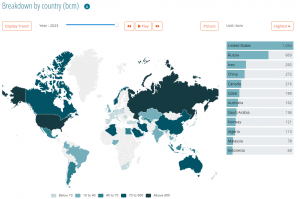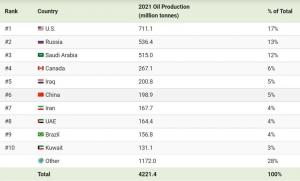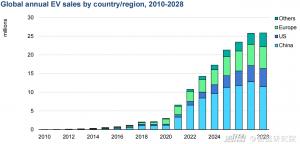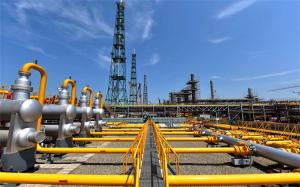Global Demand For Oil And Gas Peaks By 2030
In its mid-term market report for 2023, the International Energy Agency Oil says that as the energy crisis prompts an accelerated shift to clean energy economies in multiple countries, and advances in electric vehicles, energy efficiency, and other clean energy-related technologies, world oil demand growth will slow to near stagnation over the next five years, with global oil demand peaking by 2030.
For natural gas, the world currently consumes a total of 4 trillion cubic meters of natural gas per year.
Natural gas is the main source of electricity and heat for industry and buildings. Oil is mainly used in the transportation sector, in addition to petrochemical manufacturing, heating, and other end uses.
With such a high demand, the extraction of oil and gas is also a top priority for the livelihoods and economies of countries around the globe. ZMS Cables, as a leading supplier of power and electrical equipment, provides a brief explanation of how cables and electrical equipment operate in the oil and gas industry.
Oil and Gas Extraction
Oil and gas extraction is the process of extracting oil and natural gas buried in underground formations from the ground. The way oil and gas are extracted from the ground to the surface can be categorized according to whether or not the wellbore fluid needs to be artificially energized: self-injection and artificial lift. Artificial lift oil extraction includes gas lift oil extraction, pumping machine rod pump oil extraction, submerged oil electric centrifugal pump oil extraction, hydraulic piston pump oil extraction, and jet pump oil extraction.
The global oil market is gradually returning to normal after three years of turmoil.2022 Adjustments in global trade and two consecutive emergency stock releases by IEA member countries eased tensions in the oil market, with crude oil supplies rising and crude oil benchmark prices largely stabilizing. The extraction of oil and gas has not been subjected to any interference, and in recent years the market economy under the rising demand, which is related to the two years of new energy continued to develop and the hot sales of electric vehicles.
The cable industry also plays a vital role in oil and gas extraction. Not only to deliver a normal power supply but also responsible for the signal stability of the site.
Choosing the Right Industrial Cable Sheath
The environment of oil and gas extraction is very harsh, in the deep sea area, not only to resist the acidity and corrosiveness of seawater but also to strong enough material to resist the deep sea water pressure.
For example, in a natural gas compressor station, want to closed working environment and the area is clean, but there may be extremely low temperature, in the use of ordinary PVC material cable, it is easy to low temperature caused by the cable surface layer of the fracture.
PVC thermoplastic sheath and LSZH low smoke halogen-free sheath are the best choices. They are suitable for most closed working environments, can resist low temperatures, release limited smoke when exposed to high heat sources, and do not produce toxic halogens.
The use of cable equipment in oil extraction is quite different from natural gas, as oil's physical and fluid nature can cause some cables' corrosion. It is also important to select the level of oil resistance required for the cable, and for environments that require frequent exposure to harsh oils the "UL Oil Resistant 2" rating is the best choice.
Electric vehicles will replace 80% of the oil demand growth
The accelerated deployment of clean energy technologies around the world will slow the average annual growth in global oil demand in the coming years. Global oil demand growth plummets from 2.4 million barrels per day (bpd) in 2023 to 400,000 bpd in 2028.
Fuel use in the transportation sector has long been one of the pillars of oil demand. As electric vehicle development, biofuel usage, and economics improve, fuel demand growth in the transportation sector peaks at 4.53 million barrels per day beginning in 2025 (only slightly above 2019 levels) and then begins to decline annually, with electric vehicles replacing 80% of oil demand growth.
The report predicts that by 2028, one in four new cars will be electric, and total electric vehicle sales will reach 25.9 million, with more than half of those sales occurring in the Chinese market. This would displace 2.3 million fuel vehicles from gasoline use. In China alone, electric cars sold after 2022 could avoid a 1 million barrel per day increase in fuel demand in 2028.
Data source: https://www.thepaper.cn/newsDetail_forward_23553745
In 2021, the U.S., Russia, and Saudi Arabia are each the three largest oil producers in the world. These three countries account for 42% of the world's oil production.
Natural Gas.
The U.S. is by far the largest producer of natural gas, with Texas and Pennsylvania accounting for 47% of U.S. natural gas production, according to a comparison of extraction data by country. The U.S. power and industrial sectors consume about one-third of its domestic natural gas consumption.
Russia is the second-largest producer of natural gas and the largest exporter of natural gas from 2021 onwards. It exports about 210 billion cubic meters of gas to Europe and China through pipelines. About 80% of Russia's natural gas comes from the Arctic.
Data source: https://yearbook.enerdata.net/natural-gas/world-natural-gas-production-statistics.html
The Age of Fossil Fuels is coming to an end
The consumption of the three main fossil fuels will begin to decline this decade due to the rapid growth of renewable energy and the popularity of electric vehicles, according to the latest forecasts from the International Energy Agency.
According to IEA Administrator Fatih Birol, "We are witnessing the end of the fossil fuel era and we must prepare for the next one." He added, "This shows that climate policy does work."
The organization will release its World Energy Outlook report this week, and Bilour noted that new large-scale fossil fuel projects risk becoming so-called "stranded assets," while acknowledging that some investment in the oil and gas sector is needed to compensate for the decline in existing production.
Oil and gas companies may not just have misjudged public opinion ...... if they expect demand for oil and gas to grow further over the next few years, they may well have misjudged the market as well," added Bilor. New large-scale fossil fuel projects pose not only significant climate risks but also significant financial risks."
The United Nations also mentioned in a recently released report that the world is not on track to meet its goal of curbing global warming and that more action is needed on all fronts. Countries need to commit to phasing out fossil fuels and setting 2030 targets for expanding renewable energy.
Source:
https://www.iea.org/news/the-energy-world-is-set-to-change-significantly-by-2030-based-on-today-s-policy-settings-alone.
Oil and Gas Development Drives Other Economic Markets
ZMS Cables has been involved in oil and gas projects in several countries around the world over the past three decades, particularly in the Middle East, such as the UAE, and Central Asia, where ZMS supplies electrical equipment and cables. With the dramatic increase in demand in the global oil and gas market comes a constant supply of electrical equipment and cables. In the development of new production standards for cables, due consideration should be given to the corrosive properties associated with oil when oil is extracted. The natural gas development, should take into account the natural gas development in the drilling process requires mining tunnel cable needs to have strong compression and tensile characteristics.
Oil development in Niger is expected to lead to rapid economic development in the country
In recent years, new oil projects are expected to increase Niger's crude oil production by about nearly ten times and build crude oil export pipelines. Niger's oil development began in 2011 with the development of oil fields in the country and the construction of a refinery in Zinder by China National Petroleum Corporation. Currently, the refinery has an average production capacity of only 20,000 barrels of oil per day, which, coupled with poor logistics and transportation, has resulted in limited oil production and export of oil products.
The second phase of oil field development and constructing a crude oil pipeline will change this situation. PetroChina's Phase I production plan is based on a total crude oil reserve of 580 million barrels, which will be available for development for 25 years, with a gradual decline in production over the next 10 years. The latest exploration has shown that the oil reserves are much higher than expected. The total cost of the oil development project is about $6.2 billion, of which $4 billion will be used for the second phase of field development. Crude oil exports are forecast to account for 25% of Niger's export revenues based on current oil prices.
Niger signed a pipeline construction agreement in September 2019 with CNPC. Subsequently, Benin signed a pipeline construction agreement with CNPC and Niger signed a transportation agreement with Benin. The pipeline project is estimated to cost $2.2 billion. An environmental impact assessment and a full feasibility study are underway, and the project has been granted an official transportation permit. As originally planned, it is expected to be completed by the end of 2021 and oil exports will begin in 2022. Due to the outbreak of an epidemic this year, the start of the second phase of the project will be delayed until 2021.
Oil exports will contribute to substantial economic growth. Macroeconomic analysis shows that Niger will start exporting crude oil in 2022, which is expected to (i) increase GDP by 13.2% by 2022; (ii) achieve the target of 110,000 barrels of crude oil per day; (iii) increase tax revenue to GDP by 3% compared to 2020; (iv) bring exports to 66% of GDP and increase the current account by 50%; (v ) improve the trade deficit, although most of the export revenues will be used to service the external debt of the oil program.
Data source: https://oil.in-en.com/html/oil-2908650.shtml
The rise in the market of oil and gas development is very important for the global market, many power and automation industries are utilized in the oil and gas extraction market, and the mutual assistance and collaboration of the various sectors in the industrial sector can only lead to a better outlook for the future of industrial oil and gas extraction.
ZMS Cable
ZMS Cable
+ +86 37167829333
email us here
Visit us on social media:
Facebook
X
LinkedIn
YouTube
Other
Innovation in Cable Manufacturing Introducing Our Latest Products - ZMS Cable





